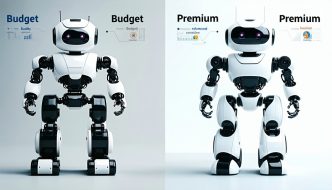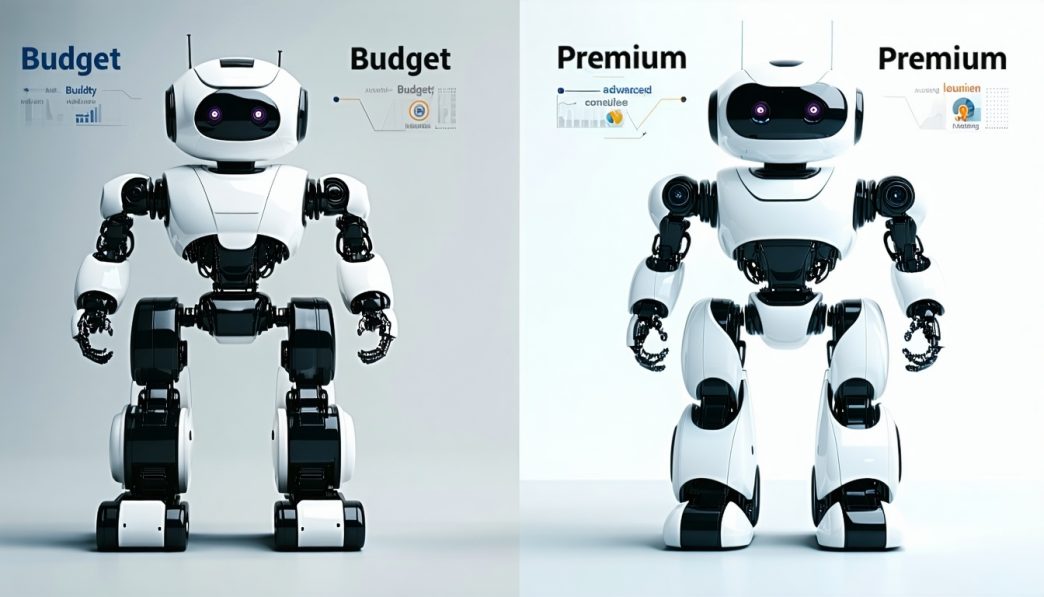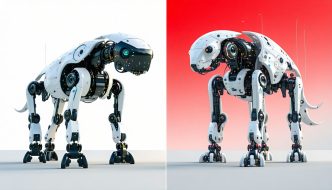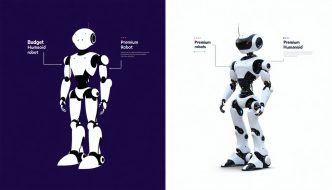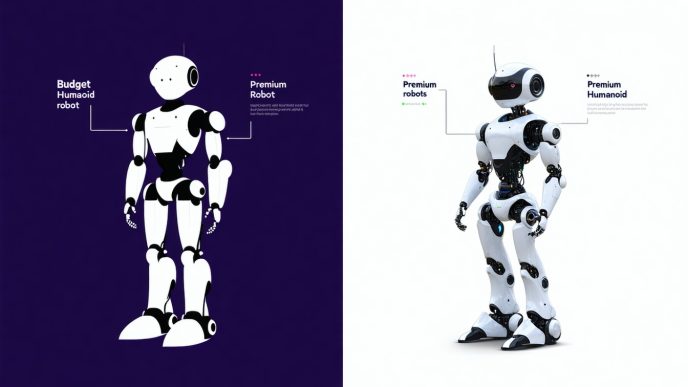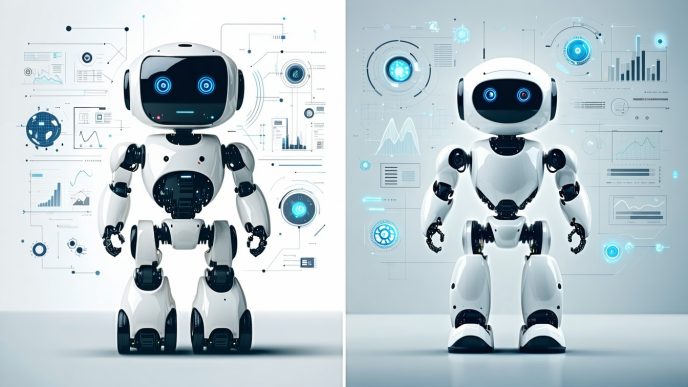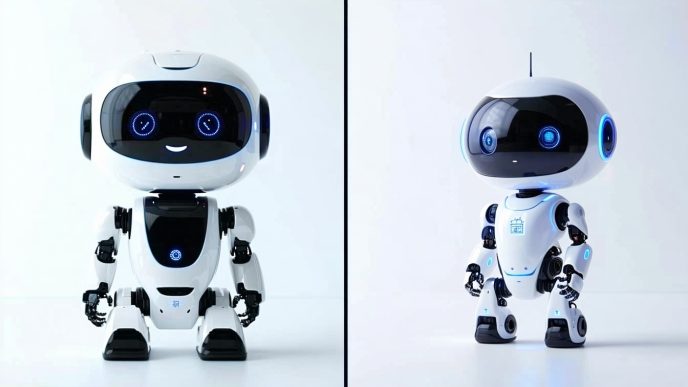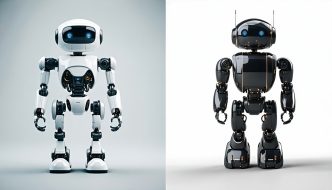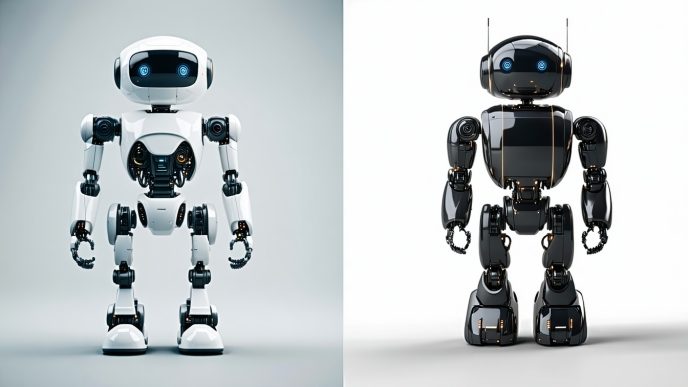Understanding Robot Build Quality
The build quality of a robot plays a vital role in its overall performance, durability, and user satisfaction. Understanding the significance of materials design and the factors influencing longevity can help buyers make informed decisions between budget and premium robots.
Importance of Materials Design
Materials design is a crucial aspect of robot build quality, impacting both functionality and lifespan. High-quality materials can enhance a robot’s performance and resilience, allowing it to operate more efficiently and withstand wear and tear. The choice of materials affects various components, including the chassis, motors, and sensors.
| Material Type | Advantages | Disadvantages |
|---|---|---|
| Aluminum | Lightweight, durable, corrosion-resistant | Higher cost compared to plastics |
| Plastic | Cost-effective, lightweight | Less durable, prone to wear |
| Steel | Very strong, long-lasting | Heavy, can rust without coating |
| Carbon Fiber | Lightweight, high strength-to-weight ratio | Expensive, can be brittle |
Investing in robots made from high-grade materials often results in better functionality and fewer repairs. Conversely, budget robots frequently utilize lower-cost materials, which may compromise their long-term effectiveness. For a deeper comparison of construction quality, see our article on budget vs premium robots.
Factors Influencing Longevity
Several factors influence the longevity of a robot, including design, materials, and how they are utilized. Understanding these factors can help users choose a robot that best fits their lifestyle and requirements.
- Usage Environment: Robots used in harsh environments, such as outdoors or in industrial settings, require durable materials and robust design to prevent damage.
- Maintenance: Regular maintenance can significantly extend a robot’s lifespan. Budget robots often have lower maintenance costs, but premium models may require specialized care, affecting long-term ownership costs. Details regarding maintenance can be found in our article on robot maintenance costs budget vs premium.
- Technological Features: Features such as navigation systems and battery life also affect longevity. Premium robots usually incorporate advanced technologies that enhance reliability. A comparison of battery life can be seen in our article on battery life budget robots vs premium robots.
- Build Complexity: More complex robots with intricate designs may be more prone to malfunctions if not made with high-quality materials.
Based on these factors, potential buyers can better assess whether to opt for a budget-friendly option or invest in a premium model. Exploring specific types of robots, including humanoids and quadrupeds, can provide further insights; check out our articles on budget humanoid robots vs premium humanoid robots and budget quadruped robots vs premium quadruped robots.
Budget Robots
Overview of Budget Robot Build Quality
Budget robots are designed to provide essential functions at a reduced price point. While these robots can offer great value for money, their build quality often reflects the cost-saving measures taken during manufacturing. Typically, budget robots may not have the same level of durability or feature set as premium models.
Users may notice that budget robots often use simpler technology and less advanced engineering, which can affect performance in demanding environments. However, for most everyday tasks, a well-designed budget robot can still meet user needs effectively.
Key aspects usually include lighter materials and fewer advanced features, impacting the overall longevity of the device. For a solid overview comparing various options, see our article on budget vs premium robots.
Common Materials Used in Budget Robots
The construction of budget robots utilizes materials that are more affordable, which can impact their overall strength and durability. Common materials found in budget robots include:
| Material | Characteristics |
|---|---|
| Plastic | Lightweight and cost-effective, but less durable in extreme conditions. |
| ABS (Acrylonitrile Butadiene Styrene) | Common plastic that offers decent strength but may not withstand high stress. |
| Low-grade Aluminum | Used for structural components; lightweight but may bend under pressure. |
| PVC (Polyvinyl Chloride) | Often used for casing; provides a degree of water resistance but is not as sturdy as other options. |
| Basic Circuit Boards | Generally less robust; may lack advanced features found in premium models. |
These materials contribute to a lower production cost, which is reflected in the pricing of budget robots. However, this can lead to increased wear and tear over time, affecting the robot’s performance and lifespan.
For specific insights on types of budget robots, check out comparisons like budget humanoid robots vs premium humanoid robots or budget quadruped robots vs premium quadruped robots. Budget-conscious buyers should weigh these factors against their expectations for performance and reliability.
Premium Robots
Overview of Premium Robot Build Quality
Premium robots are characterized by superior build quality that caters to performance, durability, and reliability. These robots are generally constructed with advanced technologies and materials designed to withstand intensive operations while maintaining functionality. Superior engineering ensures that these robots can tackle various tasks efficiently, making them an attractive option for buyers looking for long-term solutions.
Build quality in premium robots often includes features such as:
- Enhanced structural integrity
- Superior motor performance
- Higher quality sensors for better navigation and interaction
The materials used in their construction contribute significantly to both the lifespan and effectiveness of the robot. Understanding these aspects can aid buyers in their decision-making process regarding the robot build quality budget vs premium.
High-Quality Materials Used in Premium Robots
The materials utilized in premium robots play a crucial role in their overall performance and longevity. Below is a comparison of common materials incorporated in premium robots and their respective advantages.
| Material Type | Advantages | Common Applications |
|---|---|---|
| High-Grade Aluminum | Lightweight and corrosion-resistant | Robot chassis and frames |
| Carbon Fiber | Extremely strong yet lightweight | Structural components |
| High-Density Plastics | Impact-resistant, flexible | Casings and shells |
| High-Performance Alloys | Excellent strength-to-weight ratio | Gears, motors, and key mechanisms |
| Advanced Composites | Tailored properties for specific needs | Specialized functions and sensors |
Choosing premium options enhances functionalities such as battery life and navigation capabilities. For a deeper look at how battery life may differ between options, visit our article on battery life budget robots vs premium robots.
Additionally, the investment in higher quality materials means lower maintenance costs over time. These factors contribute to a favorable return on investment for budget vs premium robots. Buyers considering the long-term value of robotics are often drawn to the benefits provided by premium build quality. For insights into the maintenance costs associated with different robotic choices, explore our article on robot maintenance costs budget vs premium.
Understanding the distinctions in materials and build quality can aid value-conscious buyers in making informed decisions in comparing options.
Performance Comparison
In evaluating the performance of robots, the build quality plays a significant role. This section explores how robot build quality impacts overall performance and compares the durability and reliability between budget and premium robots.
Impact of Build Quality on Performance
The materials and construction methods used in a robot can drastically affect its functionality. Premium robots typically feature higher-quality materials and advanced engineering techniques, leading to enhanced performance levels. Factors influenced by build quality include response time, processing power, and sensor accuracy.
Budget robots may cut costs through less durable materials and simpler technology, which often results in compromised performance. The table below summarizes key performance aspects associated with budget and premium robots.
| Performance Aspect | Budget Robots | Premium Robots |
|---|---|---|
| Response Time | Slower | Faster |
| Processing Power | Lower | Higher |
| Sensor Accuracy | Moderate | High |
| Task Versatility | Limited | Extensive |
Durability and Reliability in Budget vs Premium Robots
Durability is another critical consideration when comparing budget and premium robots. Premium models generally employ robust materials and superior construction, leading to a longer lifespan. Budget robots, while more affordable, may exhibit a higher failure rate over time.
In the following table, the expected longevity and reliability metrics for each category are highlighted, assisting buyers in their decision-making process.
| Durability Aspect | Budget Robots | Premium Robots |
|---|---|---|
| Expected Lifespan (Years) | 2-3 | 5-10 |
| Failure Rate (%) | 15-20 | 5-10 |
| Maintenance Frequency (Months) | Every 6 | Every 12-18 |
| Repair Costs (Estimated) | Higher | Lower |
For comparisons on navigation systems, battery life, and additional considerations, readers can explore more on our articles about budget vs premium robots and related topics such as robot maintenance costs budget vs premium.
Long-Term Investment Value
Evaluating the long-term investment value of robots often involves a clear comparison between cost and longevity. Value-conscious buyers must weigh the benefits of budget robots against the features and reliability offered by premium options.
Cost vs. Longevity Considerations
The initial price of a robot can significantly influence purchasing decisions. Budget robots tend to have a lower upfront cost but may not last as long or perform as efficiently as their premium counterparts. On the other hand, premium robots generally come with a higher price tag but are constructed from superior materials, offering enhanced durability and longer life spans.
To illustrate this comparison, the following table provides insights into potential costs and operational longevity for budget and premium robots:
| Robot Type | Average Cost ($) | Expected Longevity (Years) | Estimated Maintenance Costs ($/Year) |
|---|---|---|---|
| Budget Robots | 200 – 500 | 2 – 5 | 50 |
| Premium Robots | 800 – 3000 | 5 – 10 | 20 |
These figures underscore the need for buyers to consider not just the purchase price but the overall expenses related to maintenance and the expected lifespan of the robot.
Pros and Cons of Investing in Budget or Premium Robots
Investing in budget or premium robots involves evaluating various pros and cons, which can guide value-conscious buyers in their decision-making.
Budget Robots
Pros:
- Lower initial cost
- Accessible for those on a tight budget
- Sufficient features for basic tasks
Cons:
- Potentially lower build quality
- Shorter lifespan and higher maintenance costs
- Limited advanced features
Premium Robots
Pros:
- Higher build quality and longevity
- Advanced technology and features
- Lower maintenance costs over time
Cons:
- Higher upfront investment
- May not fit into a limited budget
- Possible overkill for basic tasks
Comparing the long-term value of these two categories of robots can help buyers decide based on their specific needs and budget constraints. For more nuanced comparisons between different robot types, check out our articles on budget humanoid robots vs premium humanoid robots and battery life budget robots vs premium robots. Each purchase decision impacts the long-term investment potential, from robot maintenance costs budget vs premium to the overall return on investment for budget vs premium robots.

